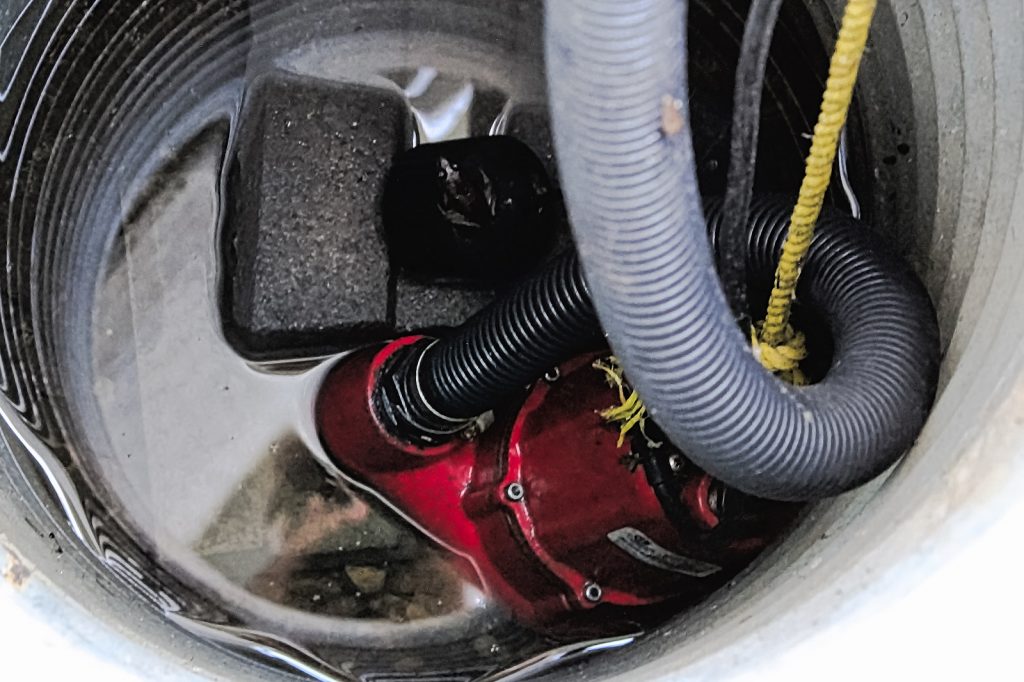How To Clean a Sump Pump

A crucial but frequently neglected part of home maintenance is sump pump cleaning. A clean sump pump guarantees efficient water drainage from your crawl space or basement, preventing mold growth and any water damage to your property. In this thorough guide, we’ll show you exactly how to clean your sump pump while also giving you important details on how to maintain and operate it. Let’s start now!
How Does a Sump Pump Work?
Understanding how a sump pump works will give you a better idea of why regular clean sump pump is crucial. A typical sump pump consists of several essential components. The sump pit collects water from the drainage system or natural groundwater, and when the water level rises, a float switch is triggered, activating the pump. The impeller, fueled by an electric motor, then propels the water through a discharge pipe away from your home’s foundation.
Signs That Your Sump Pump Needs Cleaning
To determine whether your sump pump requires cleaning, you must be aware of common issues and symptoms. One sign of a dirty sump pump is if the motor runs excessively or irregularly. Another indication is if there is noticeable debris, such as dirt or gravel, in the sump pit. Additionally, a foul odor emanating from the sump pump area indicates the presence of stagnant water or bacteria buildup. Regular cleaning is essential to prevent these problems and ensure your sump pump operates efficiently.
Safety Precautions Before Cleaning
Before beginning the cleaning process, it is crucial to prioritize safety. Begin by turning off the power supply to the sump pump at the main electrical panel. This precautionary measure will prevent any accidental electrical shocks during the cleaning process. Furthermore, ensure you have the necessary equipment and supplies at hand, such as gloves, a bucket, a scrub brush, and appropriate cleaning solutions.
Step-by-Step Guide to Cleaning a Sump Pump
1: Disconnecting the Pump
- To guarantee safety, turn off the sump pump’s power supply at the main electrical panel.
- Make sure you carefully remove the sump pump from the sump pit without damaging any of its components.
2: Cleaning the Pump Exterior
- Inspect the pump for any visible debris or dirt, and remove them manually.
- Utilize suitable cleaning solutions to wipe down the exterior surfaces of the pump, eliminating any grime buildup.
3: Cleaning the Pump Interior
- Disassemble the pump components according to the manufacturer’s instructions.
- Thoroughly clean the impeller, float switch, and intake screen using a scrub brush and cleaning solution to remove any accumulated sediment or debris.
4: Flushing the Discharge Line
- Check the discharge pipe for clogs or excessive buildup.
- Use a plumbing snake or a high-pressure water jet to remove any obstructions and ensure a smooth flow of water.
- Alternatively, consider utilizing commercial cleaners designed specifically for clearing sump pump discharge lines.
5: Inspecting and Testing the Pump
- Carefully examine the condition of each component and replace any damaged parts.
- Reconnect the pump to the power supply and run a test to ensure proper functioning before reinstalling it into the sump pit.
Additional Maintenance Tips for Sump Pumps
Regular Maintenance Schedule
- Establish a routine maintenance schedule that includes regular cleaning to ensure your sump pump operates at its optimal capacity.
- The frequency of maintenance depends on the usage and environmental factors, such as heavy rainfall or high groundwater levels.
Battery Backup Systems
- Consider installing a battery backup system to ensure uninterrupted operation during power outages or electrical failures.
- Regularly maintain and test the backup system to guarantee it functions as intended when needed most.
Common Issues After Cleaning – Troubleshooting Guide
Pump Does Not Turn On
- Check the power supply and ensure it is connected properly.
- Inspect the float switch for any damage or obstruction, and clean if necessary.
- If the issue persists, it may be time to consult a professional for further troubleshooting.
Pump Runs Continuously
- Check if the float switch is functioning correctly and adjust its positioning if required.
- Examine the check valve to ensure it is not stuck open, causing continuous water flow.
- If the problem persists, it is advisable to seek professional assistance to avoid potential damage to the pump.
Strange Noises or Vibrations
- Unusual sounds or vibrations may signify loose components or a worn-out motor.
- Inspect and tighten any loose screws or connections.
- To prevent future harm, it is best to get in touch with a specialist if the problem continues.
Replacement and Repair Considerations
Important Advice or Sump Pump Repair.
Signs That Your Sump Pump Needs Replacement
- Recognize the warning indications of a deteriorating sump pump, such as recurrent failures, excessive noise, or decreased effectiveness.
- Repair may be an option in some circumstances, but it is preferable to buy a new pump if the old one is beyond repair or if the expense of repair is more than the benefit of replacement.
Hiring a Professional vs. DIY
- When deciding between professional assistance and a do-it-yourself approach, consider factors such as your comfort level with handling electrical components and your knowledge of sump pump mechanics.
- Hiring a professional ensures expertise and reduces the risk of potential damage during repairs or replacement.
Conclusion
In order to maintain your sump pump’s best performance and shield your house from any flood damage, you must regularly clean it. You can safely and effectively clean your sump pump, solve common problems, and make educated decisions about maintenance, repair, or replacement by referring to this thorough guide. Keep in mind that your home’s reliable defense against water incursion is a well maintained sump pump. For a secure and dry living environment, be watchful and emphasize the cleanliness and upkeep of your sump pump.
A Guide to Sump Pump Installation.

